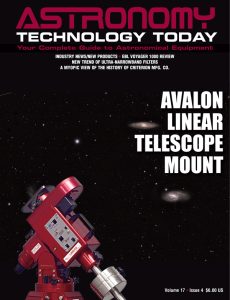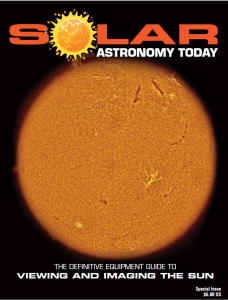An Astrospheric Android beta test launch has been announced by the publishers of Astrospheric.
As the publishers note, “Over the last few years, we’ve added a lot of new features to Astrospheric (yay), causing the code base to grow (boo). Unfortunately, we haven’t updated the way we deliver new content to the apps, which has resulted in longer loading times and issues in poor network conditions. In the latest Astrospheric Android beta we aim to fix a number of loading issues that can occur when network issues are encountered. The size of the app is now larger; however the extra size contains content the app no longer needs to fetch from the server each time it loads. Overall, this will decrease the amount of network traffic needed to load the app and significantly speed up app load in nearly all network conditions.”
 As to joining the Astrospheric Android beta they commented, “If you’re an Android user, and especially if you’re already an Astrospheric user that sometimes sees loading issues, please consider trying the beta build. As with any beta, there might be some issues. You’re welcome to report these, but we usually collect all the info we need through telemetry. The beta can accommodate 1000 users, and currently, around 450 slots are taken. Over the next month, beta users will see several updates as we optimize the loading process.”
As to joining the Astrospheric Android beta they commented, “If you’re an Android user, and especially if you’re already an Astrospheric user that sometimes sees loading issues, please consider trying the beta build. As with any beta, there might be some issues. You’re welcome to report these, but we usually collect all the info we need through telemetry. The beta can accommodate 1000 users, and currently, around 450 slots are taken. Over the next month, beta users will see several updates as we optimize the loading process.”
Astrospheric’s primary purpose is to offer an advanced weather forecasting service for North American astronomers. Using the astronomy data produced by the Canadian Meteorological Center, NOAA, NCEP, and more, Astrospheric quickly produces a highly accurate 48 hour forecast for any location in the United States or Canada.
They recently announced a new model in Astrospheric’s cloud ensemble: The National Blend of Models (NBM). The NBM is a state-of-the-art blend of over 40 models from around the world, including the European model (ECMWF) and NOAAs High Resolution Rapid Refresh (HRRR). The NBM updates every hour and forecasts 36 hours into the future.
As they note, “The National Blend of Models (NBM) is a nationally consistent and skillful suite of calibrated forecast guidance based on a blend of both NWS and non-NWS numerical weather prediction model data and post-processed model guidance. This update makes Astrospheric a one stop shop for viewing all major cloud models.”
Astrospheric has also recently announced the availability of Astrospheric Data APIs to allow programmatic access to the weather models and astro-variables used on the company’s service.
You can learn more about the Astrospheric Android Beta and other new functionality here.

 And to make it easier for you to get the most extensive news, articles and reviews that are only available in the magazine pages of Astronomy Technology Today, we are offering a 1-year magazine subscription for only $6! Or, for an even better deal, we are offering 2 years for only $9. Click here to get these deals which only will be available for a very limited time. You can also check out a free sample issue here.
And to make it easier for you to get the most extensive news, articles and reviews that are only available in the magazine pages of Astronomy Technology Today, we are offering a 1-year magazine subscription for only $6! Or, for an even better deal, we are offering 2 years for only $9. Click here to get these deals which only will be available for a very limited time. You can also check out a free sample issue here.
The Sun is more active than it’s been in years and if that’s not enough, we have the Annular Solar Eclipse on October 14, 2023 and the Total Solar Eclipse on April 8, 2024! If you’d like to learn more about the technology behind solar observing, solar imaging and more, you can check out our free publication, “The Definitive Guide to Viewing and Imaging the Sun”. You don’t have to sign up or provide any information, simply click here and enjoy reading!

